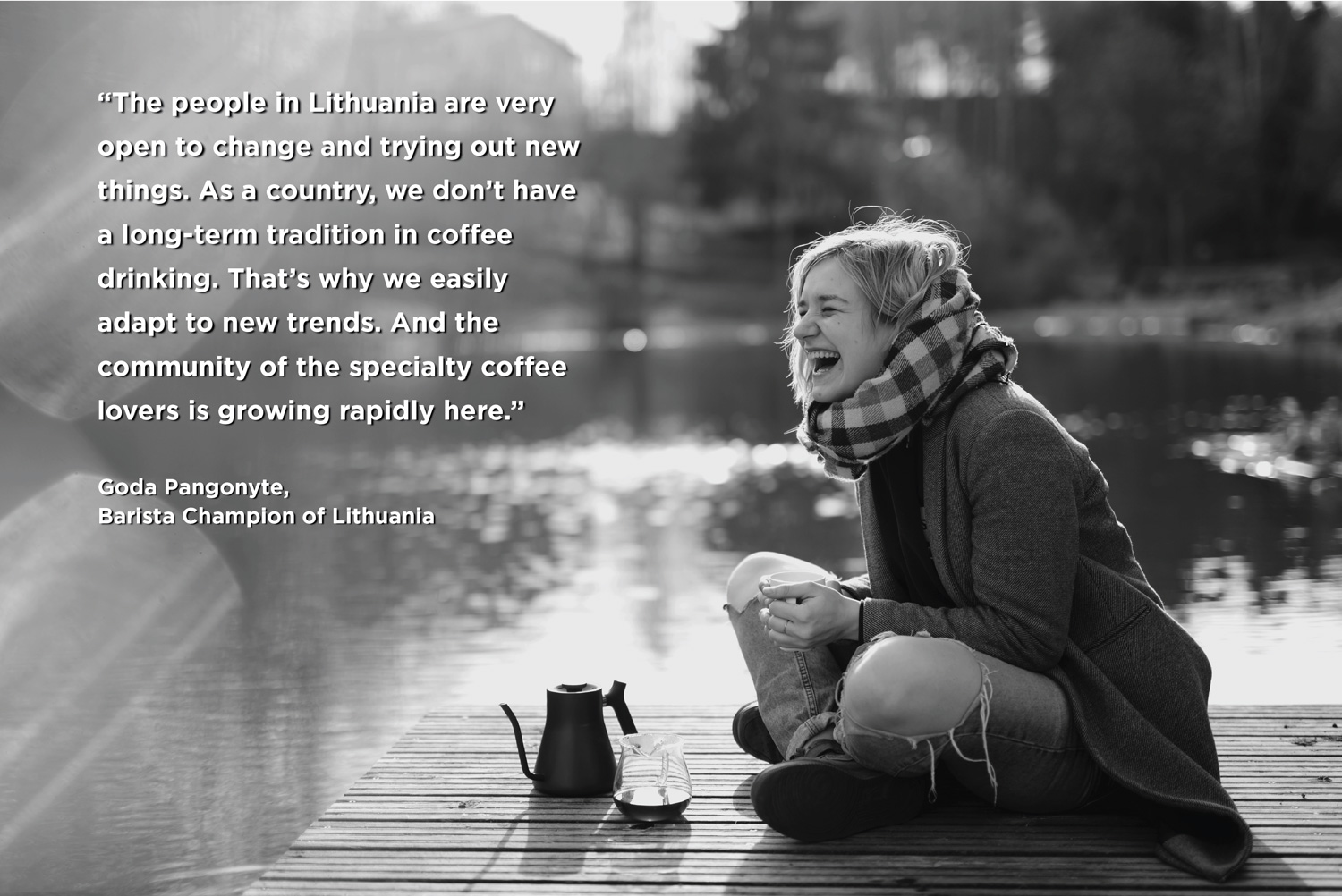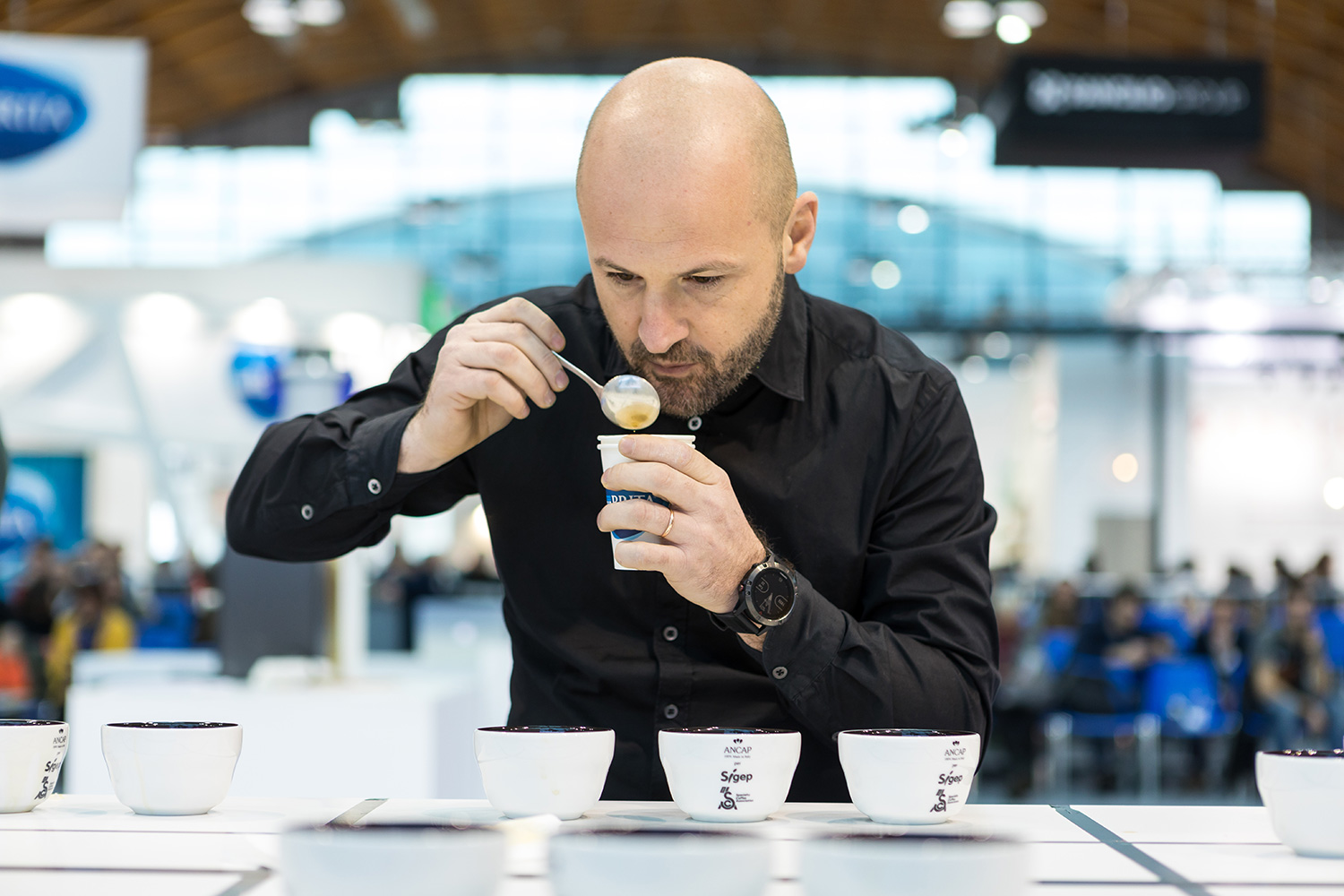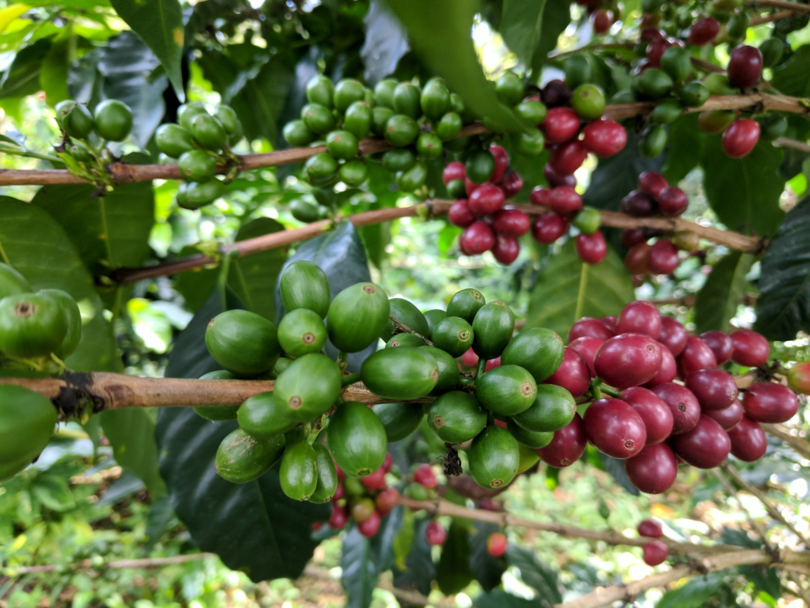
But whether you’re in a wine bar or a coffee shop, wouldn’t it be nice to order the drink you actually want? Or to be knowledgeable enough to vary your order from time to time? Most people intuitively know the difference between a red wine and a white, as most also know an espresso from a latte from a drip coffee. But beyond these basic category breakdowns, there is plenty of room for professionals to educate consumers about the differences between beans, to provide helpful context for consumers to further enjoy their coffee, and to create more specific taste preferences.
In a coffee shop, a great place to start is the coffee variety. Varieties are the diverse subspecies of coffee plants, either through selective breeding or natural selection. The Specialty Coffee Association defines as a variety as a “rank of taxa that delineates differences between plants that are smaller than in subspecies but larger than forms.” It is critically important for a coffee producer to understand the different coffee varieties and their traits such as fruit yield and level of disease resistance. But coupled with their region of origin, coffee varieties also carry their own distinct flavor profiles.
Coffee Species
It’s unknown exactly how many varieties exist, but it numbers in the thousands. But containing most of the world’s coffee varieties are the two main coffee species of Arabica and Robusta. The vast majority of specialty coffee is Arabica, which has a generally sweet taste and high acidity. Robusta, while more resistant to disease and easier to grow than Arabica, is generally of inferior quality, with a naturally bitter and harsh flavor.
Arabica coffee originated and evolved in Southwest Ethiopia, where between two and three thousand varieties developed there over time. But coffee is now grown around the world in regions within the Coffee Belt, a horizontal strip of land surrounding the equator.
Coffee Varieties
Within the Arabica family, there are two ‘parent’ coffee varieties of which most other varieties originate from:
- Typica: One of the oldest and most important varieties of Arabica. After being spread from Ethiopia to Yemen to India to Indonesia, Typica is now grown in many places around the world, including Colombia, Java, Yemen and France. It is a tall variety of coffee that is susceptible to major diseases and has a low yield, but it produces an excellent cup quality, with clear sweetness and cleanliness.
- Bourbon: The second largest coffee variety in the world, and a much more productive plant than Typica. French missionaries introduced Bourbon from Yemen to Bourbon Island, now called La Reunion, in the Indian Ocean, in the early 1700s. It didn’t leave the island until the mid-1800s, when it was spread to Africa and the Americas. Like Typica, it is also susceptible to disease, but it produces a similarly excellent cup quality, often described as complex, delicate and lush.
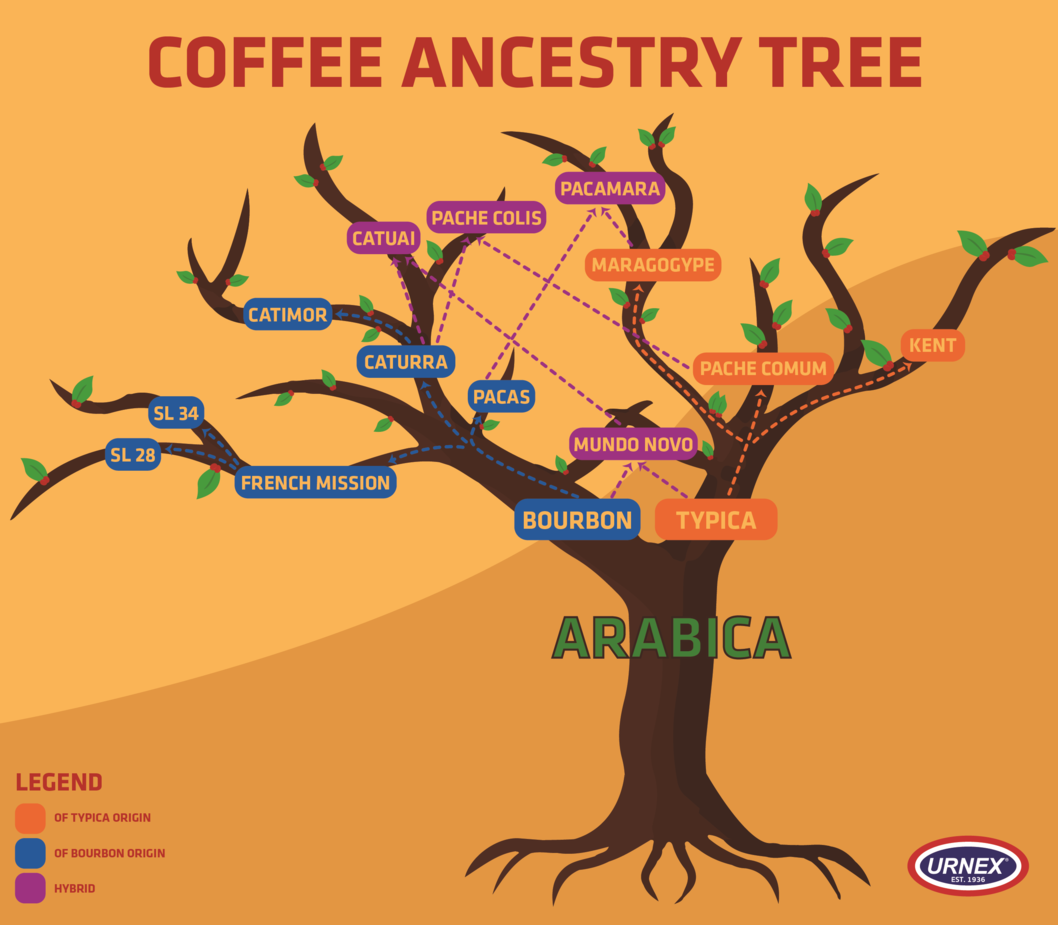
Typica
There are a handful of notable coffee varieties in the Typica family:
- Maragogype: With its unusually large beans and height of the plant, Maragogype is sometimes called the ‘elephant bean’. It typically adopts the flavor characteristics of the soil of which it is grown.
- Pache Comum: This is a smaller coffee plant in stature, which allows it to be planted more densely to achieve higher yields. Pache Comum can be described as having a smooth or flat character.
- SL34: This plant was selected in Kenya in the late 1930s at the Scott Agricultural Laboratories. SL34 has a complex citric acidity, heavy mouthfeel and clean, sweet finish.
Bourbon
The Bourbon family has a lineage of natural mutations:
- Caturra: First discovered in Brazil, it has become one of the most economically important coffees in Central America, often the standard comparison to other cultivars. It has less clarity and sweetness than Bourbon but has bright acidity and low-to-medium body.
- Villa Sarchi: This a mutation of Caturra, a more direct descendent of Bourbon, was originally found in Costa Rica in the 1950s. It has an elegant acidity, intense fruit tones and excellent sweetness.
- Gesha: Originating from the Gesha village in Ethiopia, it is a wildly flavorful cup that can produce stone and melon fruit sweetness with floral notes. It is one of the most expensive coffees in the world, fetching for up to $600 per pound at auction, and is often sourced for use in barista competitions.
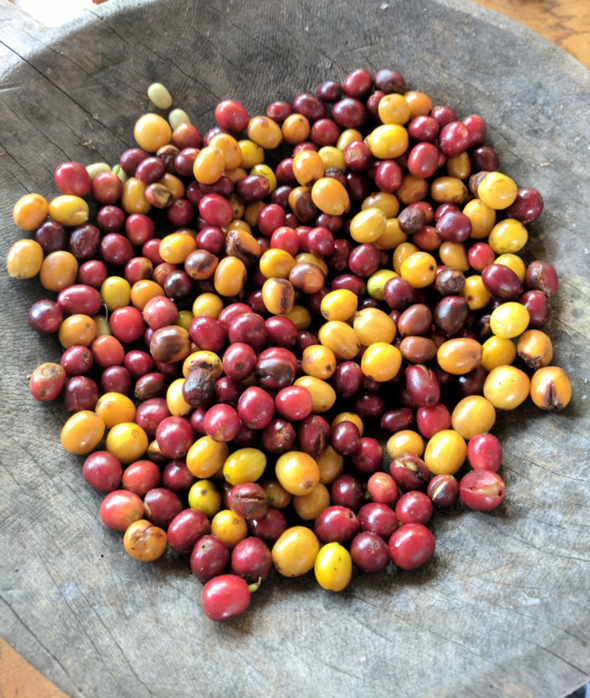
Hybrids
There are also a few well-known Typica-Bourbon hybrids:
- Mundo Novo: A natural cross between Typica and Bourbon first found in Brazil in 1943, it has since spread to Peru, Guatemala and Malawi. A quality cup of Mundo Novo can have a heavy and sweet flavor with lower acidity.
- Pacamara: This is a hybrid between Maragogipe and Pacas that was developed in El Salvador. It’s characterized by a medium to dense body with creamy texture, and with flavor that ranges from chocolate or butterscotch to sweet citrus tones.
- Catuai: A high-acidity cross between Mundo Novo and Caturra. This is a high yielding plant whose cherries don’t easily fall off the branch, which is a favorable trait in areas with strong winds or rain.
With thousands of coffee varieties grown around the world, it’s not feasible to teach casual coffee consumers about every last one. Nor should the variety of coffee be the only detail provided about the coffee in a specialty coffee. But in tandem with other factors relevant to coffee’s agricultural background like region, climate and elevation, coffee professionals can begin to provide a more well-rounded story of a cup, so consumers can further appreciate and discern the differences of the many forms of coffee.

